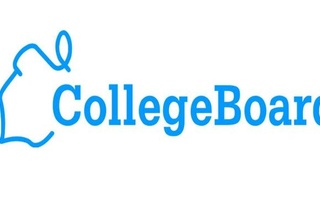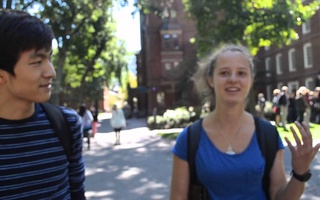This week, dozens of young basketball players enjoyed their first appearance in the national spotlight, courtesy of “March Madness.” Good performance in the tournament could lead to the NBA draft and win them seven digit paychecks and endorsement deals. But for now, they are not allowed to receive compensation for their moves on court. The no-pay rule is a great distortion in the labor market for basketball talents, and should be changed to make the college sport more entertaining.
The young basketball players are awkwardly designated as “student-athletes.” By requirement, student-athletes must be amateurs, who play basketball only for the love of the game. But student-athlete is nothing but an oxymoron in the college basketball business. Universities and athletic programs recruit high school players and give them millions in scholarships, exclusively based on their athletic potential. The continuation of these scholarships also depends on their athletic status. Meanwhile, the players’ academic enrollment is sometimes in name only. A recently leaked grade-inflated essay written by a football player at University of North Carolina-Chapel Hill shows how little academic involvement universities expect of their revenue-generating athletes. College athletics does not “enhance [the student-athletes’] overall college experience,” as the NCAA claims. Rather, a bogus college experience is set up so that college athletics can continue without paid athletes.
The no-pay rule was not a problem when college basketball was introduced, because the players’ productivity did not merit high pay. However, as the popularity of televised college basketball increases, so does the revenue from athletic programs and thus the productivity of the players. The no-pay rule is effectively a price ceiling on the cost of the players’ labor. As the market price for their labor increases, the no-pay rule becomes more distortionary. Consequently, players have increasingly opted for alternatives to playing for college teams. Before 2000, only twelve NBA draftees were drafted straight out of high school. In the six years after 2000, thirty high school players skipped college to play in the NBA. The “prep-to-pro” route became so prevalent that the NBA banned drafting players out of high school in 2006, a move that indirectly saved college basketball from further talent exodus.
Just like other market inefficiencies, the inefficiency from the price ceiling of players’ labor is unlikely to go away with more regulations. A large number of players responded to the NBA’s ban on high school players by competing in college for the new one year minimum period. Since 2006, all but one of the NBA’s top draft picks were recruited right after freshman year. The NCAA’s claim that its basketball student-athletes play only for love of sports is farcical. As the international basketball market matures, players gain more alternatives to college teams. In 2008, one of the best high school players, Brandon Jennings, opted to compete overseas for a professional club rather than for an American college basketball team. He gained NBA eligibility the next year.
For the select few who can join the NBA with or without college basketball, the no-pay rule is a minor monetary loss compared to their future paychecks. However, most college basketball players will never compete professionally. For them, college athletics demand a fast-paced athletic schedule and academic sacrifice. Many are effectively thrown under the bus by the college they play for once their athletic career is over. They do play basketball for the love of the sport, and the NCAA treats them as use-objects.
If the NCAA is serious about making college basketball an arena for those who love the sport, it should allow players to get paid. For the future NBA players, this change will position college basketball as a direct competitor for talents with the NBA, rather than its current status as a talent pipeline to the NBA. Those who want money will choose the NBA, and those who want fame and support from loyal, boisterous fans will choose college basketball. For players who cannot make the NBA, getting paid for their service should not diminish their passion. Rather, it might encourage them to work harder at their passion, knowing that rewarded for their performance and risk-taking awaits them.
We have abandoned the fetish with amateurism in other aspects of our economic lives. We don’t want our surgeons to enjoy cutting people up without pay. Why should athletes be treated differently? College basketball players are economic actors with various incentives and needs, rather than single-minded basketball aficionados. As numerous cases have shown in the past, monetary incentive, not regulation, is the best way to organize these economic actors to achieve gainful employment, no matter the team or league they play for. It should not be a surprise that freeing the basketball labor market will better align the interests of the supply with those of the demand. Fans and players alike will benefit from lifting the price ceiling.
In an efficient and fair market, even mercenaries can be good soldiers.
Jonathan Z. Zhou ‘14 is an applied mathematics concentrator in Eliot House. His column appears on alternate Mondays.
Read more in Opinion
Toward a Fairer SystemRecommended Articles
-
 Weekly News Round-up: Tech, Waivers Leveling the Playing Field (Or Not, Say SAT Scores)
Weekly News Round-up: Tech, Waivers Leveling the Playing Field (Or Not, Say SAT Scores) -
A Better Dean of the CollegeThe Dean of the College should also represent the needs of students in deliberations at the university level. Harvard is a complex place where the needs and desires of faculty of all stripes, students, staff, and the institution itself need to be reconciled.
-
 The First Generation Admissions Experience
The First Generation Admissions Experience -
 Crafting the Perfect College List
Crafting the Perfect College List -
 The Dean of the College: Leading with Limits
The Dean of the College: Leading with Limits -
A High-Stakes Dean Search: Transition in University Hall During the Capital CampaignAdministrators and student leaders say that the next permanent College Dean has the potential to maximize the College’s gains from the campaign, particularly if he or she is called upon to serve a more active role in soliciting donations.













